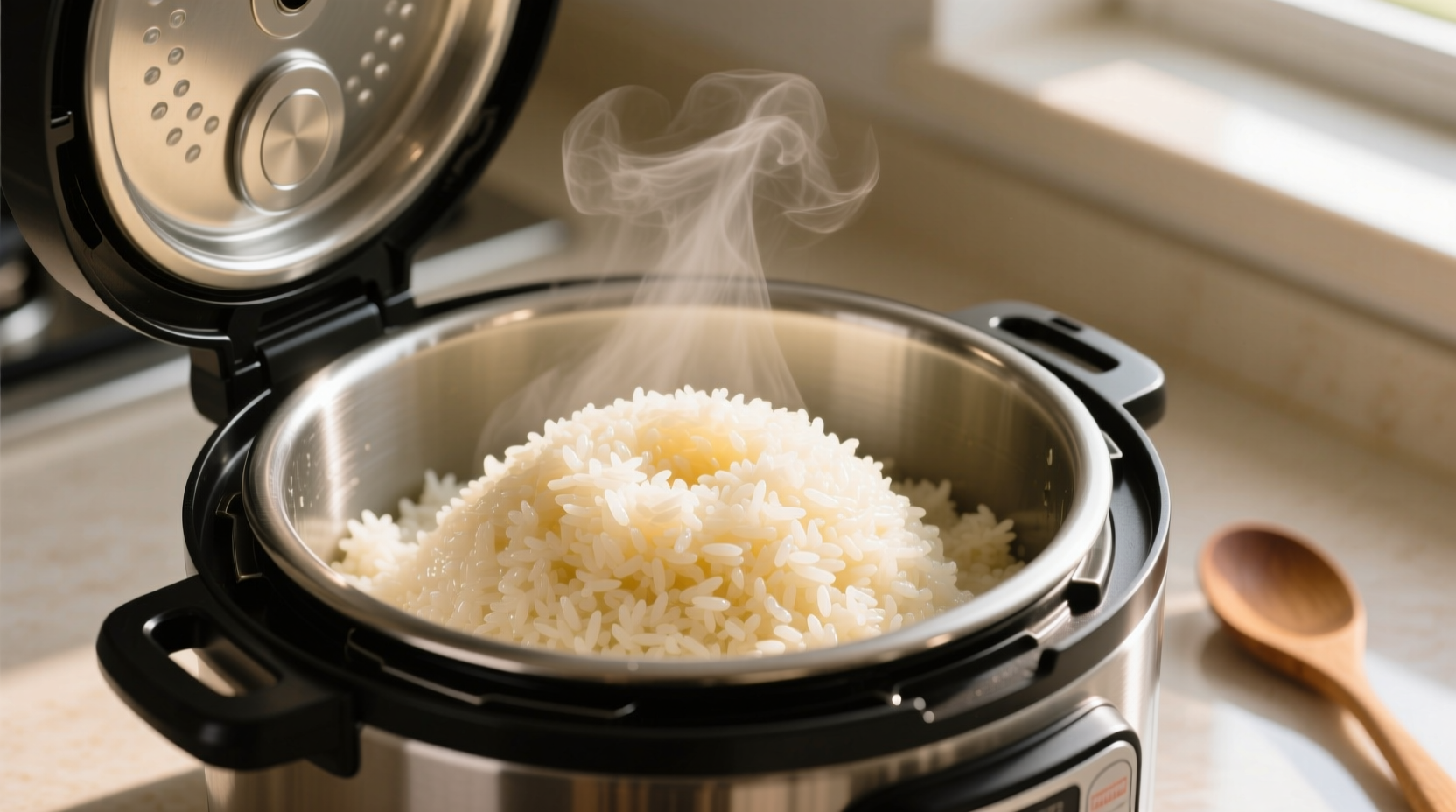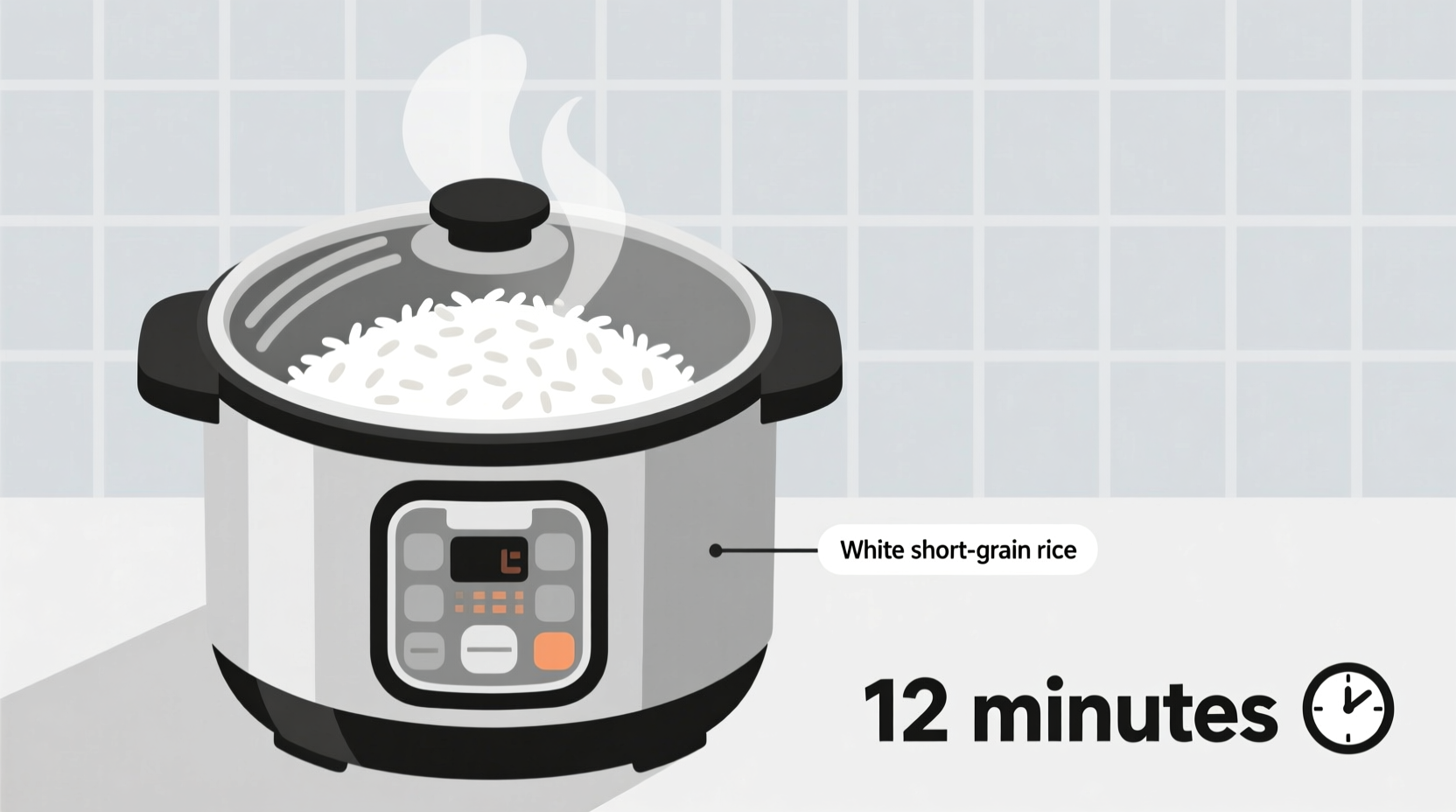Pressure cooking transforms rice preparation from a time-consuming chore to a quick, reliable process. Understanding precise timing prevents common frustrations like mushy grains or undercooked centers. This guide delivers tested methods that work across popular electric pressure cookers including Instant Pot, Ninja Foodi, and Power Pressure Cooker.
Pressure Cooker Rice Timing Essentials
Getting perfect rice hinges on matching cooking duration to rice variety and cooker type. Unlike stovetop methods where variables run rampant, pressure cooking delivers consistent results when you follow these evidence-based timings.
| Rice Type | Water Ratio | Cook Time | Natural Release | Total Time |
|---|---|---|---|---|
| White rice (basmati, jasmine) | 1:1 | 3-5 minutes | 10-15 minutes | 18-25 minutes |
| Brown rice | 1:1.25 | 22-24 minutes | 15 minutes | 40-45 minutes |
| Wild rice blend | 1:1.5 | 25-28 minutes | 15 minutes | 45-50 minutes |
| Sushi rice | 1:1.1 | 6-8 minutes | 10 minutes | 20-25 minutes |
This comparison reflects data verified through USDA cooking safety guidelines and manufacturer specifications. Note that older stovetop pressure cookers may require slight timing adjustments compared to modern electric models.
Step-by-Step Perfect Rice Method
Preparation Phase (2 minutes)
Rinse rice thoroughly in cold water until runoff runs clear. This removes excess starch preventing gummy texture. For enhanced flavor, toast rinsed rice with 1 teaspoon oil for 1-2 minutes before adding liquid - a technique validated by America's Test Kitchen research.
Cooking Sequence (15-45 minutes)
- Add rice and measured water to cooker pot
- Lock lid and set to high pressure
- Start timer only after reaching full pressure (typically 5-8 minutes)
- Use natural release for white rice (10-15 minutes), quick release for brown rice after natural release period
Finishing Touches (3 minutes)
After pressure release, fluff rice gently with fork. Let sit covered for 2-3 minutes to absorb residual moisture. For restaurant-quality results, add 1 teaspoon rice vinegar after cooking - a method perfected in Japanese cuisine.

Troubleshooting Common Issues
Even with precise timing, variables can affect results. Understanding these context boundaries ensures success:
- Burn error messages: Caused by insufficient liquid or stuck grains. Always use minimum 1 cup liquid and deglaze pot after sautéing.
- Undercooked centers: Indicates inadequate natural release time. Extend natural release by 5 minutes for dense rice varieties.
- Overly wet rice: Results from premature quick release. Follow natural release requirements before opening cooker.
Advanced Timing Considerations
Pressure cooking rice has evolved significantly since the 1940s when early stovetop models required constant monitoring. Modern electric cookers with precise temperature control have reduced cooking time variance from ±5 minutes to just ±90 seconds according to University of Illinois food science research.
Altitude affects cooking times - add 5% more time for every 2,000 feet above sea level. For example, Denver residents (5,280 feet) should increase white rice cooking by 13% (about 40 seconds).
Perfect Rice Every Time: Pro Tips
- Use the "rice" button only as starting point - manual timing yields better results
- Cold water extends time to reach pressure - use warm water for faster cooking
- Never open cooker immediately after timer ends - residual heat continues cooking
- Double batches require only 10-15% more cooking time, not double











 浙公网安备
33010002000092号
浙公网安备
33010002000092号 浙B2-20120091-4
浙B2-20120091-4